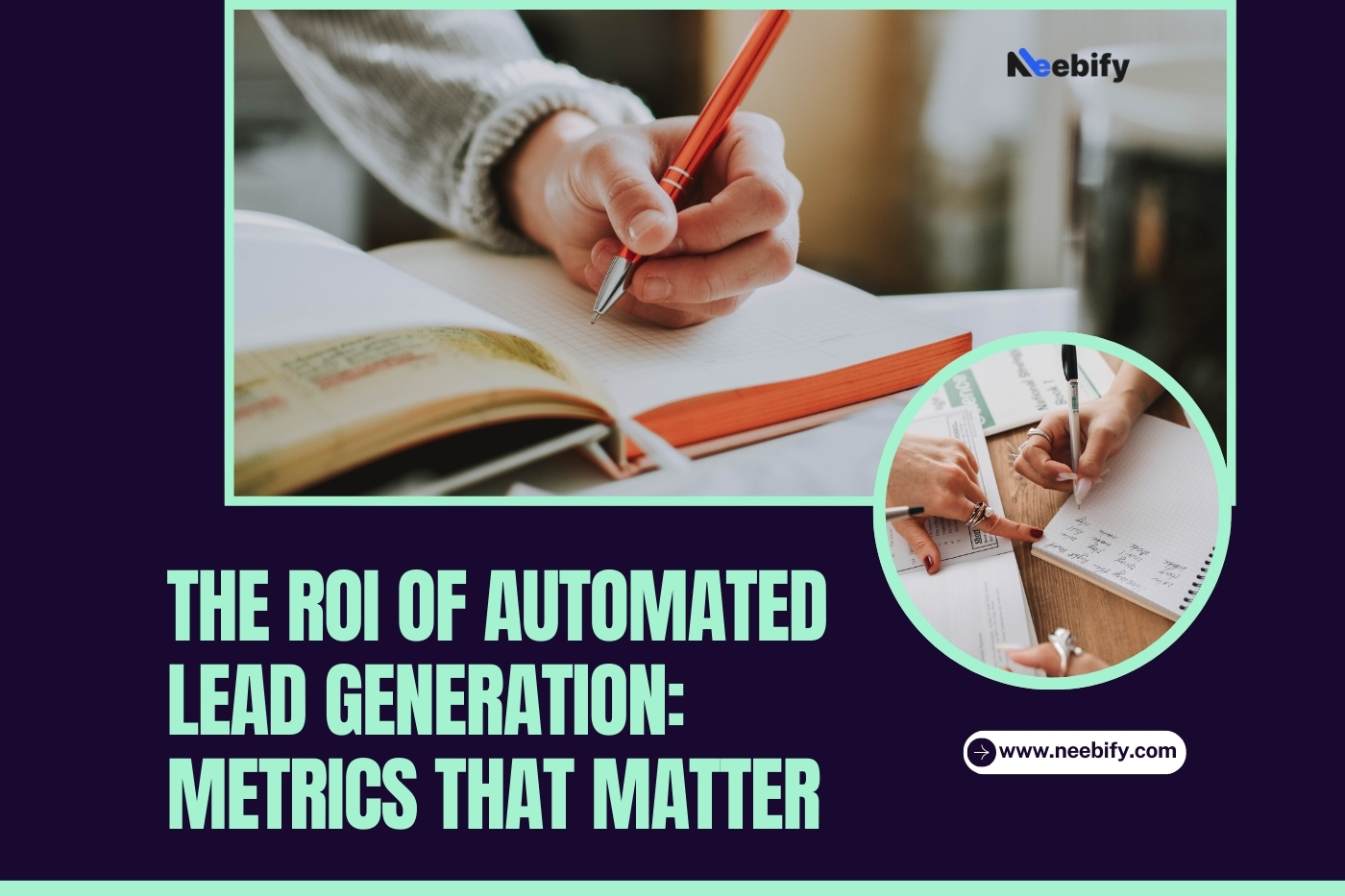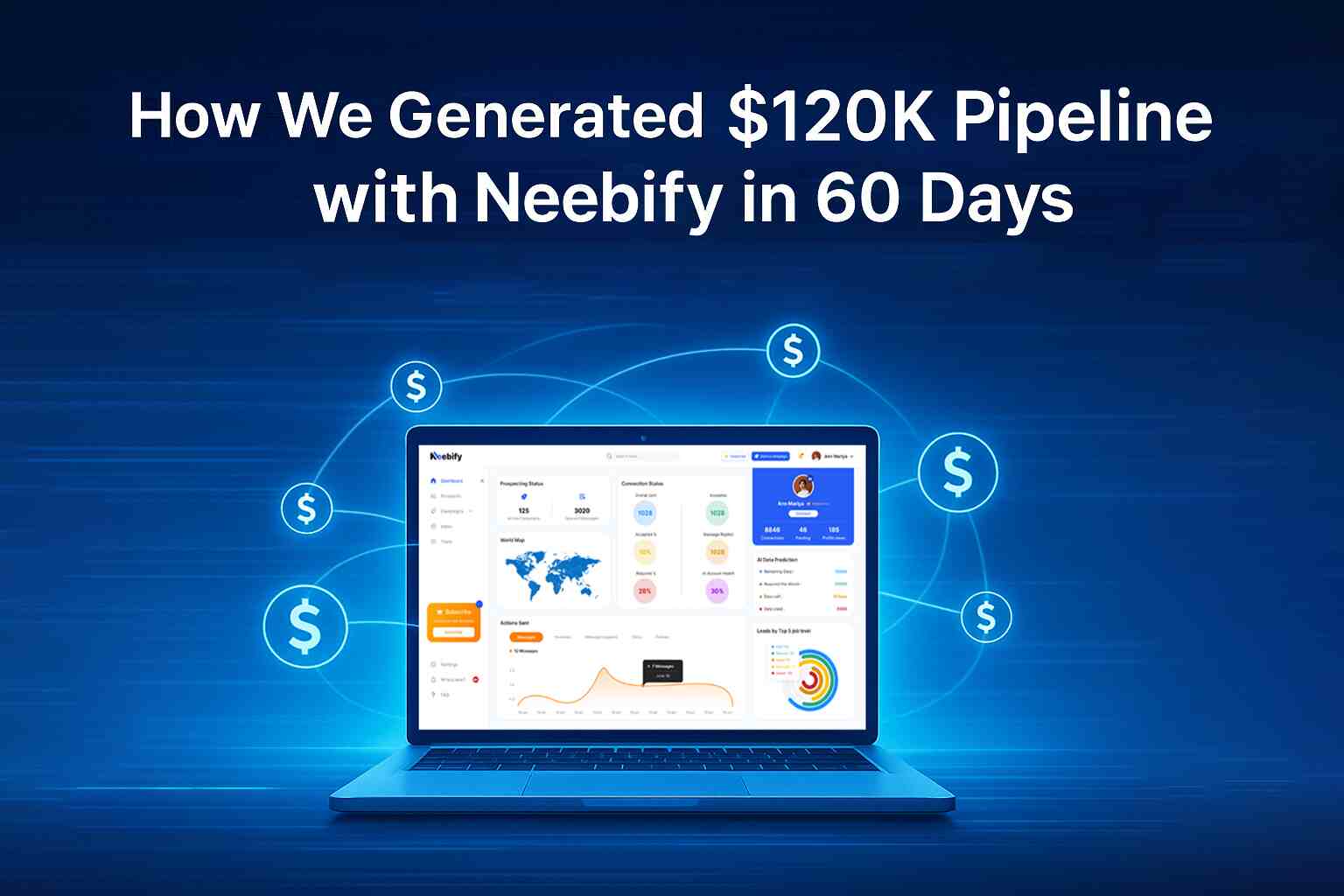Table of content
The Role of Automated Lead Generation: Metrics That Matter
Automated lead generation has completely transformed how businesses approach customer acquisition, turning what was once a time-consuming and labor-intensive process into an efficient and scalable strategy. This will enable companies to automate their marketing efforts through outreach to prospects, nurturing them, and converting them into customers with very little human interference. The trend has not only operational efficiency for marketing teams but also freed them to become more strategic. However, to understand the true value of automated lead generation, there is a real need to assess the effectiveness using clear metrics.
What is ROI in automated lead generation?
Return on Investment is an important metric to gauge the success of any business initiative that is automated lead generation. In this context, it defines the profitability of your lead generation efforts in relation to the cost incurred to deploy and maintain automation tools. In simpler terms, it will be showing you how much return you are getting for every dollar that you invest in lead generation activities.
Calculating ROI for Automated Lead Generation
Calculating the ROI for automated lead generation revolves around using the revenue the generated leads bring in versus the cost incurred in generating the leads. See the formula:
ROI (%) = (Net Profit from Leads / Cost of Lead Generation) x 100
Where,
Net Profit from Leads = Total Revenue from Leads - Total Cost of Lead Generation
Total Cost of Lead Generation: It is the cost of marketing campaigns, software tools, content creation, and other overheads. Benefit of ROI in Automated Lead Generation The ROI for automated lead generation offers the following benefits to businesses:
1. Budget Optimization: The ideas of ROI helped businesses inform their spending on marketing. With an eye toward return cultivated from the campaigns, a company can focus its resources on those channels that deliver the highest return and reduce spending for less effective strategies.
2. Better Decision Making: The clear insights into the return on investment mean businesses can make informed data-driven decisions. To this end, a business might work on the optimization of its lead generation strategies, refine its marketing, and enhance overall performance.
3. Better Revenues: By focusing on high-ROI activities, organizations are able to achieve maximum revenue. This has a positive impact on the profitability of marketing efforts and thereby contributes to better growth prospects.
4. Increased Accountability: Since ROI is a measurable parameter of success, it helps to justify the expenses in marketing and makes the teams more accountable for all their activities.
5. Scalability: Businesses confident in which of their automated lead generation strategies work best are more prepared to scale in greater magnitude of efforts without losing profits.
Unlocking ROI with these Automated Lead Generation Metrics:
Businesses should measure a set of metrics, based on which they can optimize their ROI and get an analytical view of the different aspects of their lead generation efforts. Here are some key metrics:
1. Cost Per Lead (CPL)
Cost Per Lead, in short form CPL, is the most important metric in automated lead generation. It simply refers to the average cost of attaining one lead. CPL basically tells a business how much money it's spending to bring in potential customers. It is an important metric used in determining ROI.
Formula:
CPL = Total Marketing Spend / Total Number of Leads Generated
A lower CPL denotes cheapening in the generation of each lead. This means that automation can be used to optimize CPL by streamlining campaigns targeting the perfect audience and reducing waste.
2. Conversion Rate
This is the percentage of leads from one stage that progress to the next before they can become customers. This is a parameter used to check on the effectiveness of a company's lead nurturing and conversion strategy.
Calculation:
Conversion Rate (%) = Number of Conversions / Total Number of Leads × 100
A higher rate of conversion implies that automated processes in the creation of leads are highly successful in converting prospects into customers. In that regard, it will be worthwhile for companies to leverage this metric to pinpoint potential bottlenecks in their sales funnel-at what point one should optimize landing pages or improve follow-up emails, for example.
3. Lead Quality
Lead quality is a subjective but important metric. It is an estimate of how well a lead fits the ideal customer profile of the company. This quality, therefore, shows that if high, then definitely, this would mean a better chance of closure into paying customers. This, therefore, can be said to be a very vital metric in terms of the optimization of ROI.
With this regard, a company can monitor several performance viewpoint indicators, namely lead score, engagement level, and demographic information. The scoring of leads can also be automated to rank leads in order of their value using specialized lead scoring tools; this way, the company will know on which prospects to focus its efforts.
4. Lead Velocity Rate (LVR)
The Lead Velocity Rate (LVR) is a metric that shows the growth rate of qualified leads over time. It's a great measure for assessing how well the process of lead generation is working and shows a business how fast they are really building a pipeline of future possible customers.
Formula:
LVR = (Current Month's Qualified Leads - Previous Month's Qualified Leads) / Previous Month's Qualified Leads x 100
A high LVR thus indicates that the business is effectively generating qualified leads, and its sustainable growth depends on this. This metric can therefore allow companies to project future sales and their marketing strategy regarding that projection.
5. Customer Acquisition Cost (CAC)
Customer Acquisition Cost (CAC) refers to the total cost of acquiring a new customer; every form of marketing and sales costs is taken into consideration when calculating this cost. CAC therefore becomes an important metric that indicates overall efficiency in lead generation.
Formula:
CAC = Total Marketing and Sales Expenses / Number of New Customers Acquired
The lower the CAC, the better it is, and it means the company is acquiring customers at a lower cost. CAC can be reduced for better ROI by optimization of lead generation methods.
6. Customer Lifetime Value (CLV)
Lifetime Value (LTV) is the total revenue that a business projects generating from a single customer throughout its lifetime. It allows a business to understand how much gain its generation campaign will create in terms of long-term value for the customers.
Formula:
LTV = Average Purchase Value x Number of Purchases x Customer Lifespan
The higher the LTV, the value brought in by the customer over the period is by bringing in to the business. Companies can, hence, therefore justify spending more money in generating leads and thereby increasing their ROI by increasing LTV.
7. Engagement Rate
This is a formula that measures the level of interaction leads have with the company's marketing content such as emails, social media posts, or even website traffic. High engagement rates mean that content is very engaging for the target audiences and driving interest.
Formula:
Engagement Rate (%) = (Total Engagements / Total Impressions) x 100
Through this, a business is able to measure how a set of content and channels will potentially help in creating more leads, thereby requiring more attention.
8. Return on Ad Spend (ROAS)
Return on Ad Spend (ROAS) shows a return made on investment on the advertising dollar spent. A great way of helping an organization understand how, in the first place, any particular ad is serving the purpose to bring in leads and create sales.
Formula:
ROAS = Revenue from Ads / Cost of Ads
A high ROAS means that a company is yielding healthy returns from running its ads. It can be improved by ad targeting, messaging, and placement, and with overall ROI, through optimization.
9. Email Open and Click-through Rates
Certain key effectiveness metrics in the context of automated lead generation are open rate and click-through rate. These two metrics boil down to quantifying the percent of recipients who actually open the email and further click on links within the email.
Formula:
Open Rate (%) = (Number of Emails Opened / Number of Emails Sent) x 100
Click-Through Rate (CTR) (%) = (Number of Clicks / Number of Emails Delivered) x 100
High open and click-through rates denote that the interests of the target audience are matching with the content of the email. Therefore, it is helping in nurturing those leads and converting them.
How to Improve ROI in Automated Lead Generation?
The following are some of the ways a company can ensure that automated lead generation yields the highest possible ROI.
1. Optimize Targeting and Segmentation: Leverage data-driven insights to target the right audience segments and tailor marketing messages in accordance with their preferences and behavior.
2. Leverage Advanced Automation Tools: Use cutting-edge automation software that offers deep analytics, coupled with lead scoring and nurturing capabilities to enhance lead generation.
3. Test and Refine Campaigns: Continuously test different variables of your campaigns-ad copy, email subject lines, landing page design-to see what works the best, and make data-driven decisions to optimize for better performance.
4. Focus on Quality Content: Ensure the content is valuable, informative, and interesting to your audience so as to captivate their interest and move them towards taking some sort of action.
5. Metrics Measurement and Tracking: Continuously monitor and analyze metrics with the vision of making adjustments in pursuit of the best lead generation strategy.
6. Integrate CRM and Marketing Automation Tool: Seamlessly integrate your Customer Relationship Management and marketing automation tool for smooth data flow to track leads more efficiently and make better decisions.
Why Metrics Matter in Automated Lead Generation?
Metrics play an important role in measuring the effectiveness of automated lead generation campaigns.
They indicate what is working and what needs adjustment to maximize strategies for improved results. Without the proper metrics, one cannot accurately measure their lead generation performance, the return on investment of those leads, or justify spends on automation tools. Metrics will help comprehend customer behavior, recognize bottle-necks within the sales funnels, and improve overall conversion rates.
Conclusion
Automated lead generation is a potent growth driver, but it works only if the right metrics are tracked and optimized for better ROIs.
For a business, concentrating on the main metrics, like Cost Per Lead, Conversion Rate, quality of leads, and Customer Acquisition Cost, increases the lead generation value and contributes to performance improvement based on data-driven decisions. In fact, companies can only reap all the benefits from an automatic lead generation process and carry on sustainable growth if proper strategies and tools are put in place.
Get your next meeting in a
matter of minutes.
Free Trial
Latest
The Ultimate LinkedIn Outreach Playbook 2025
A practical, modern guide to mastering LinkedIn outreach in 2025 — learn how to boost reply rates, p
12/1/2025How to Find 100 ICP Leads Without LinkedIn Sales Navigator
Generating 100 targeted ICP leads doesn’t require LinkedIn Sales Navigator. Learn how to leverage fr
11/28/2025


